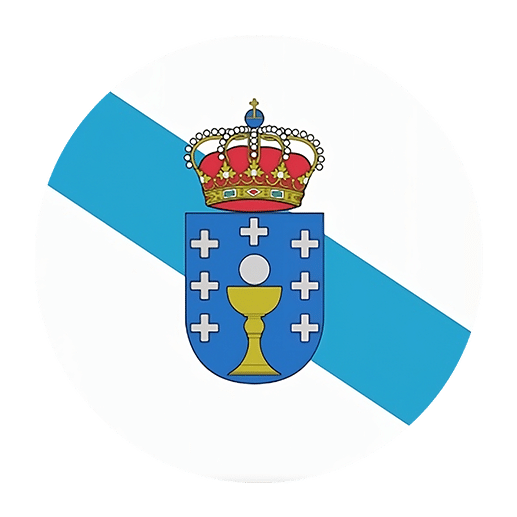Learning a new language can be both an exciting and challenging journey. For those diving into the Galician language, understanding the comparative forms of adjectives is a crucial step in mastering the language. Galician, a language spoken in the autonomous community of Galicia in Spain, has its unique set of rules and structures for forming comparatives. This article will provide a comprehensive guide to understanding and using comparative forms of adjectives in Galician, making your language learning experience more enriching and enjoyable.
The Basics of Adjectives in Galician
Before delving into comparative forms, it’s essential to understand the basic structure of adjectives in Galician. Adjectives in Galician, much like in English, describe or modify nouns. They agree in gender (masculine or feminine) and number (singular or plural) with the nouns they modify. For example:
– Masculine singular: “alto” (tall)
– Feminine singular: “alta”
– Masculine plural: “altos”
– Feminine plural: “altas”
Comparative Forms of Adjectives
Comparative forms of adjectives are used to compare two entities. In Galician, there are three primary types of comparatives:
1. **Comparative of Superiority** (more… than)
2. **Comparative of Equality** (as… as)
3. **Comparative of Inferiority** (less… than)
Comparative of Superiority
The comparative of superiority in Galician is used to express that one entity possesses a higher degree of a particular quality than another. It is formed using the structure:
**máis + adjective + ca/que**
– “máis” means “more”
– “ca” or “que” means “than”
Examples:
– “El é máis alto ca/que ela.” (He is taller than her.)
– “Esta casa é máis grande ca/que aquela.” (This house is bigger than that one.)
Comparative of Equality
The comparative of equality is used to indicate that two entities share the same degree of a particular quality. It is formed using the structure:
**tan + adjective + como**
– “tan” means “as”
– “como” means “as”
Examples:
– “Ela é tan alta como el.” (She is as tall as him.)
– “Este libro é tan interesante como aquel.” (This book is as interesting as that one.)
Comparative of Inferiority
The comparative of inferiority indicates that one entity possesses a lower degree of a particular quality than another. It is formed using the structure:
**menos + adjective + ca/que**
– “menos” means “less”
– “ca” or “que” means “than”
Examples:
– “El é menos alto ca/que ela.” (He is less tall than her.)
– “Esta casa é menos grande ca/que aquela.” (This house is less big than that one.)
Irregular Comparatives
Like many languages, Galician also has irregular comparative forms that do not follow the standard patterns. These adjectives have unique comparative forms that must be memorized.
Some common irregular comparatives include:
– “bo” (good) – “mellor” (better)
– “malo” (bad) – “peor” (worse)
– “grande” (big) – “maior” (bigger)
– “pequeno” (small) – “menor” (smaller)
Examples:
– “Este libro é mellor ca/que aquel.” (This book is better than that one.)
– “A situación é peor ca/que antes.” (The situation is worse than before.)
Special Cases and Usage Notes
While the basic structures for forming comparatives in Galician are straightforward, there are a few special cases and nuances to be aware of.
Using “ca” vs. “que”
In Galician, both “ca” and “que” can be used to mean “than” in comparative constructions. However, there are some subtle differences in their usage. “Ca” is generally used before pronouns and proper nouns, while “que” is used in most other contexts.
Examples:
– “Ela é máis alta ca min.” (She is taller than me.)
– “Este coche é máis caro que o outro.” (This car is more expensive than the other one.)
Adjectives with Inherent Comparatives
Some adjectives in Galician inherently imply a comparison, and as such, they do not typically use the standard comparative structures. These adjectives usually express a high degree of a quality.
Examples:
– “superior” (superior)
– “inferior” (inferior)
– “máximo” (maximum)
– “mínimo” (minimum)
Examples:
– “O seu rendemento é superior ao esperado.” (His performance is superior to what was expected.)
– “Esta opción é inferior á anterior.” (This option is inferior to the previous one.)
Practice and Application
Understanding comparative forms is one thing, but using them correctly in conversation and writing is another. Here are some practical tips to help you incorporate comparative forms of adjectives into your Galician language practice.
Listening and Speaking
1. **Engage in Conversations**: Try to use comparatives in your daily conversations. For instance, compare objects, people, or situations around you. This practice will help solidify your understanding and make the usage more natural.
2. **Listen to Native Speakers**: Pay attention to how native Galician speakers use comparatives. Watch Galician TV shows, listen to Galician music, or engage with Galician podcasts. This exposure will help you grasp the nuances and correct usage of comparatives.
Reading and Writing
1. **Read Galician Literature**: Reading books, articles, and other written materials in Galician will expose you to various ways comparatives are used in context. Take note of any new or irregular comparatives you encounter.
2. **Write Essays or Journal Entries**: Practice writing short essays or journal entries in Galician. Use comparative forms to describe and compare different subjects. This exercise will help reinforce your understanding and improve your writing skills.
Exercises and Drills
1. **Fill-in-the-Blanks**: Create or find exercises where you need to fill in the blanks with the correct comparative form of an adjective. This type of drill will help you practice and remember the structures.
2. **Translation Practice**: Translate sentences from English to Galician, focusing on sentences that use comparative forms. This exercise will challenge you to apply what you’ve learned in a practical context.
Conclusion
Mastering the comparative forms of adjectives in Galician is a significant step towards fluency in the language. By understanding the structures and practicing regularly, you can effectively use comparatives to express comparisons and enhance your communication skills. Remember to pay attention to irregular forms and special cases, and immerse yourself in the language as much as possible to internalize these concepts. With dedication and practice, you’ll find yourself confidently using comparative forms in Galician, bringing you one step closer to mastering this beautiful language.

